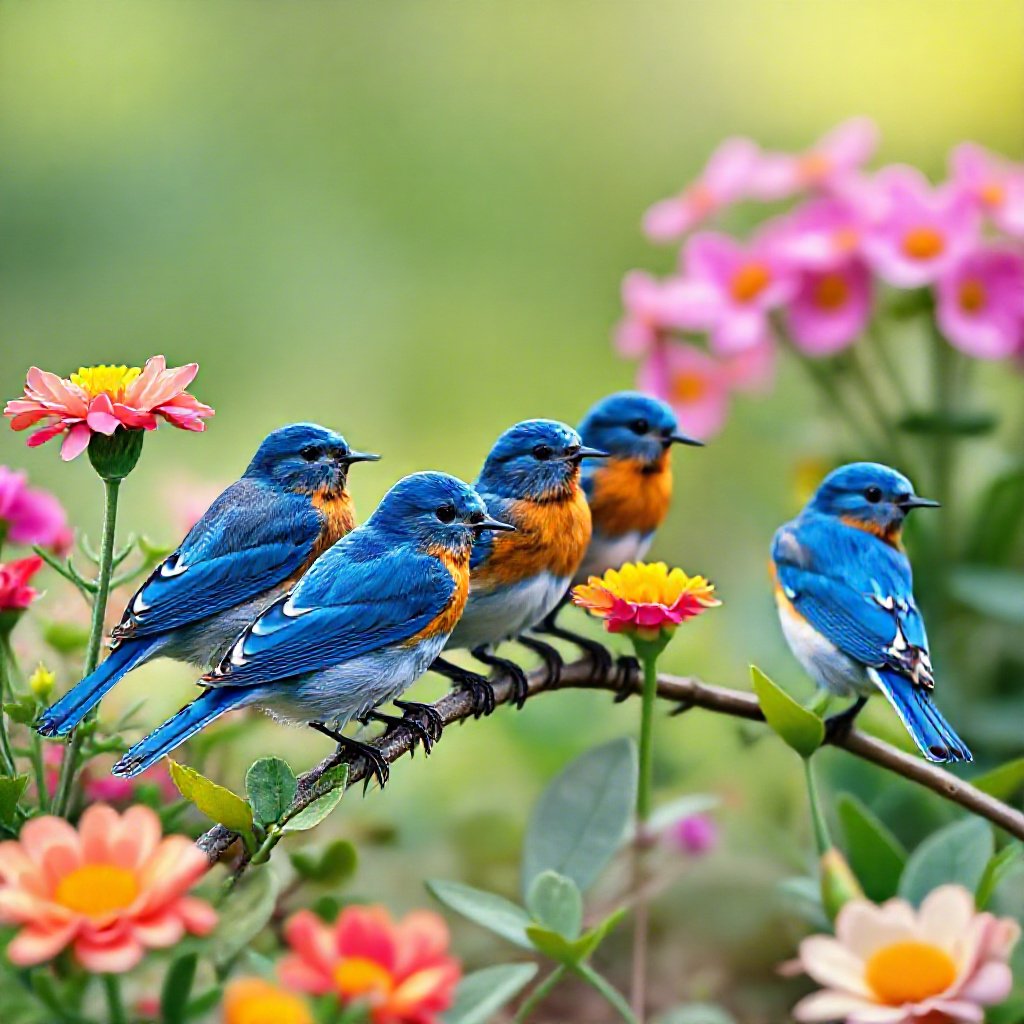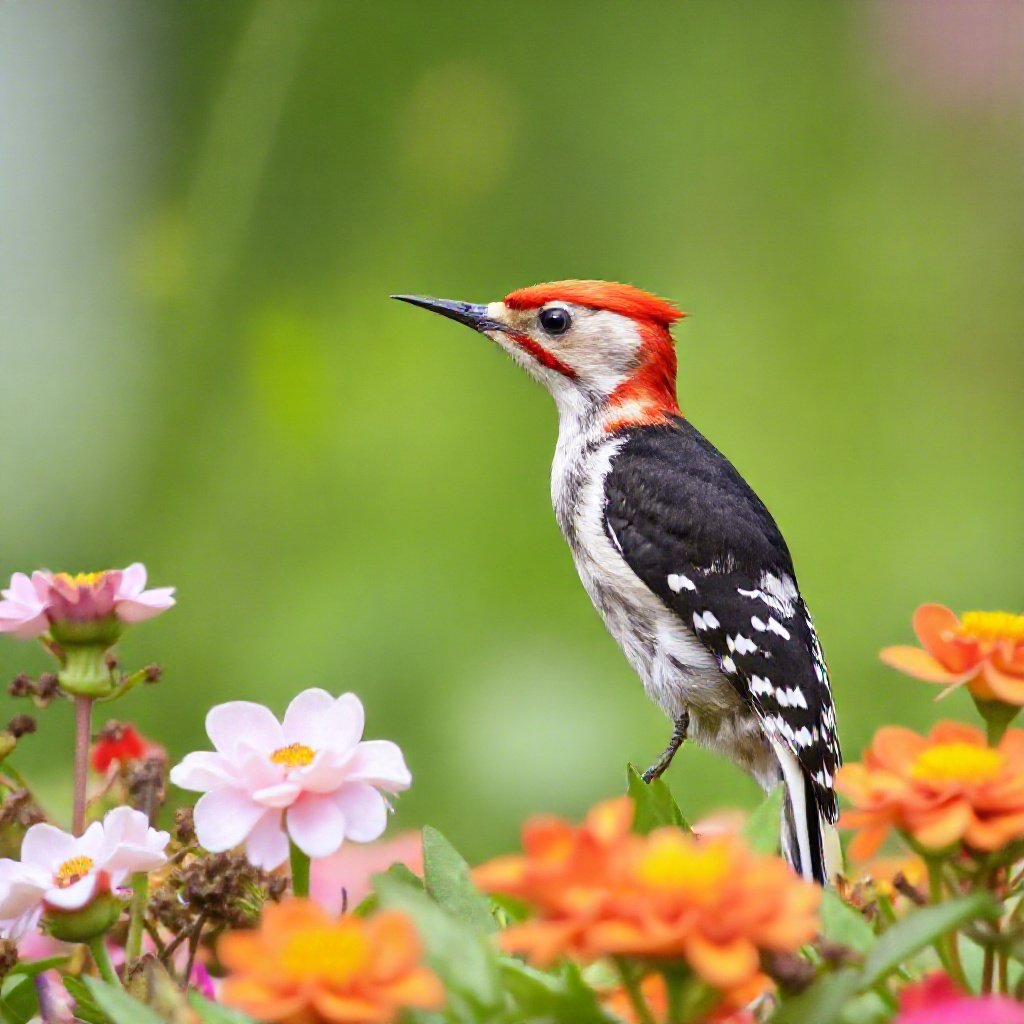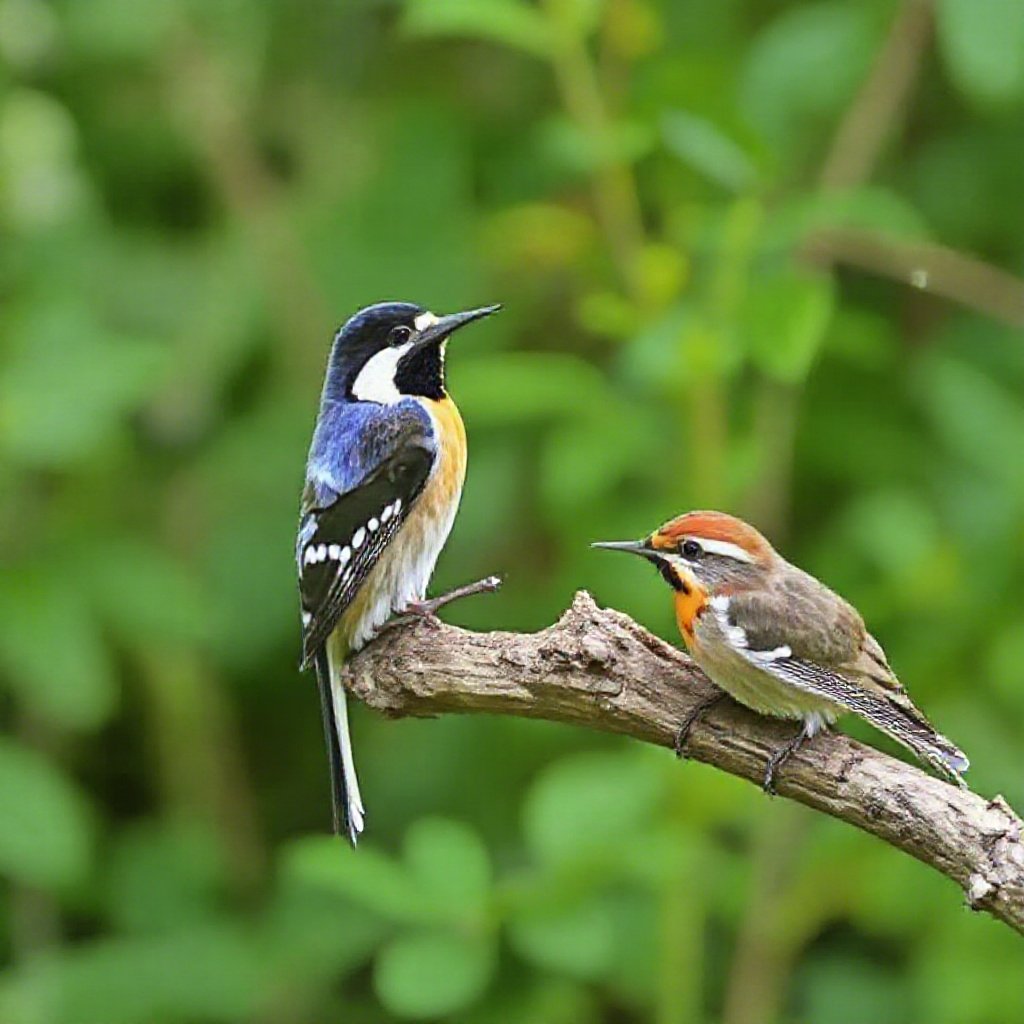Why Your Garden Needs Birds
Making your garden a haven for birds isn’t just a treat for the eyes and ears—it’s a win for the environment too. Let’s break down why bird-friendly gardens matter.
Birds: Nature’s MVPs
Birds are like the unsung heroes of nature. Here’s how they keep things running smoothly:
Nutrient Boosters: Bird droppings, or guano, are like nature’s fertilizer. They help plants grow and support other wildlife, like muskoxen in Greenland (Audubon).
Fungi Farmers: Birds spread fungal spores while they forage. These fungi form networks that help trees get nutrients in exchange for sugar.
Clean-Up Crew: Vultures eat dead animals, stopping the spread of diseases. Without them, we’d see more rotting carcasses and higher disease risks (Audubon).
Why Bird-Friendly Gardens Rock
Creating a space for birds isn’t just good for them—it’s good for you and the planet:
Basic Needs: Birds need water, shelter, and food to thrive. Your garden can provide all these essentials, helping them survive through the seasons (Fountainful).
Birdhouse Variety: Different birds need different homes. Adding a mix of birdhouses can attract a variety of species. Just make sure they’re placed safely away from predators and harsh sunlight.
| Element | Why It Matters |
|---|---|
| Water | Birds need it for drinking and bathing |
| Shelter | Keeps them safe from predators and weather |
| Food | Essential for their survival and breeding |
Want more tips on making your garden a bird paradise? Check out our guides on how to make your garden bird-friendly and bird-friendly landscaping ideas.
Creating a Bird-Friendly Garden
Making a garden that birds love is a fun and rewarding project. By giving them what they need and placing birdhouses just right, you can turn your yard into a bird paradise.
The Basics: Water, Shelter, and Food
Birds need three main things: water, shelter, and food. Here’s how you can provide them.
Water: Birds need fresh water to drink and bathe. A birdbath, bubbler, or fountain can attract many birds. Birds love the sound of moving water, so a small fountain can be a big hit.
Shelter: Dense plants and shrubs give birds a place to hide from predators and bad weather. Planting trees, bushes, and native plants can offer natural cover and nesting spots.
Food: Different birds eat different things. Native plants that produce seeds, berries, and nectar are great. Bird feeders with a mix of seeds can also help attract various species.
Placing Birdhouses
Birdhouses can attract different bird species if placed correctly (Fountainful). Here are some tips:
Keep Predators Away: Place birdhouses where cats and raccoons can’t reach. Mounting them on poles or trees with predator guards can help.
Quiet Zones: Put birdhouses in quiet parts of your garden. Birds need peace to nest and raise their young.
Weather Protection: Place birdhouses where they get some shade and are protected from strong winds. This makes them more comfortable for birds.
Right Size for the Right Bird: Different birds need different sizes of entrance holes. Make sure the hole size matches the bird species you want to attract.
| Bird Species | Entrance Hole Size (inches) |
|---|---|
| Chickadees | 1 1/8 – 1 1/4 |
| Bluebirds | 1 1/2 |
| Wrens | 1 1/8 – 1 1/4 |
| Swallows | 1 1/2 |

By focusing on these basics and placing birdhouses thoughtfully, you can create a garden that birds will love. For more tips, check out our guides on how to make your garden bird-friendly and bird-friendly landscaping ideas.
Attracting Birds to Your Garden
Making your garden a bird haven is both fun and rewarding. By feeding birds responsibly and planting native plants, you can turn your backyard into a bird paradise.
Feeding Birds the Right Way
Feeding birds can be a lifesaver, especially during tough winters or when their natural food is hard to find. But, you gotta do it right to help them out without causing problems.
Different birds like different foods and feeders. Trying out various feeders and foods in different spots can bring a bunch of different birds to your yard. Sunflower seeds are a big hit—they’re packed with energy, easy for small birds to eat, and loved by many species.
| Bird Type | Favorite Food | Best Feeder |
|---|---|---|
| Finches | Sunflower seeds | Tube feeder |
| Woodpeckers | Suet | Suet feeder |
| Robins | Mealworms | Platform feeder |
For more tips on feeding birds the right way, check out our full guide.
Planting Native Plants
Planting native plants is a surefire way to attract birds. These plants are like a buffet and a hotel for birds—they provide food, shelter, and attract insects that birds eat. Plus, they’re low-maintenance since they’re adapted to your local climate.
Native plants offer:
- Natural food: Seeds, berries, and nectar that birds love.
- Shelter: Dense foliage for nesting and hiding from predators.
- Insect support: Attracting insects that many birds eat.
Here are some native plants that can make your garden a bird magnet:
| Plant Type | Bird Benefits |
|---|---|
| Milkweed | Attracts butterflies and insects |
| Oak Trees | Provides acorns and shelter |
| Coneflowers | Seeds for finches and other birds |
Adding these plants to your garden can create a thriving ecosystem and ensure birds have plenty of food and shelter. For more ideas on bird-friendly gardening, visit our detailed guide.
By feeding birds responsibly and planting native species, you can make your garden a welcoming spot for birds. These simple steps not only make your garden more beautiful but also support local wildlife and boost biodiversity. For more bird-friendly gardening tips, explore our additional resources.
Shelter and Nesting Sites
Want to turn your garden into a bird paradise? It’s all about giving our feathered friends the right shelter and nesting spots. Birds love places where they feel safe and can find the perfect materials to build their nests.
Why Dense Vegetation Matters
Dense vegetation is like a bird’s dream come true. Think of thick shrubs, tall grasses, and perennials. These plants offer birds the cover they need to hide from predators and bad weather. According to Fountainful, these plants also provide the perfect nesting spots and materials.
Here’s what you can plant:
- Thicket-forming plants like blackberry bushes
- Tall grasses such as switchgrass
- Perennials like coneflowers and black-eyed Susans
| Plant Type | Examples |
|---|---|
| Shrubs | Blackberry bushes, holly, juniper |
| Grasses | Switchgrass, Indian grass, little bluestem |
| Perennials | Coneflowers, black-eyed Susans, asters |

Dense vegetation not only gives birds a place to hide but also supports various ecosystems by providing food and improving soil health. Birds play a crucial role in keeping forests healthy by spreading spores of valuable fungi while foraging, as noted by Audubon.
Best Plants for Bird Shelter
Choosing the right plants is key to making your garden a bird haven. Here are some top picks:
| Plant Type | Shelter Benefits |
|---|---|
| Evergreen Trees | Year-round cover and nesting sites |
| Deciduous Trees | Seasonal cover and nesting materials |
| Bushes and Shrubs | Dense cover and food sources |
Evergreen trees like pines and spruces provide year-round cover, while deciduous trees such as oaks and maples offer seasonal benefits. Bushes and shrubs, including holly and juniper, give dense cover and food sources.
Planting a mix of these plants creates a layered habitat, offering multiple levels of shelter and nesting spots. This variety attracts a wide range of bird species, boosting the overall bird population in your garden.
For more tips on attracting birds to your garden and bird-friendly landscaping ideas, check out our other articles.
By adding dense vegetation and the right sheltering plants, you can make your garden a safe and welcoming place for birds, helping them play their part in keeping our ecosystems healthy.
Water Sources and Bird Feeders
Creating a bird-friendly garden is all about providing the essentials for our feathered pals. Two biggies? Water sources and bird feeders. These can really make your garden a bird haven.
Water Features for Birds
Birds love water. They need it for drinking and bathing, which keeps their feathers in tip-top shape. Adding water features like bubblers or fountains can be a game-changer. The sound of water is like a magnet for birds.
| Water Feature | Description | Benefits |
|---|---|---|
| Bird Bath | Shallow basin on a pedestal | Easy to clean, attracts a variety of birds |
| Fountain | Circulates water, often with a pump | Adds movement, attracts more birds |
| Bubbler | Small fountain that creates gentle bubbles | Quiet, attracts small birds |
| Pond | Larger water feature, often with aquatic plants | Provides habitat for birds and other wildlife |
Want more tips on making your garden bird-friendly? Check out our bird-friendly landscaping ideas.
Choosing Bird Feeders
Picking the right bird feeders is key to drawing in different bird species. Birds have their own food preferences, so offering a mix of feeders and food types is a smart move.
| Bird Feeder Type | Description | Attracts |
|---|---|---|
| Hopper Feeder | Holds a lot of seed, dispenses as birds feed | Sparrows, finches, jays |
| Tube Feeder | Cylindrical, with multiple feeding ports | Chickadees, finches, titmice |
| Suet Feeder | Wire cage holding suet cakes | Woodpeckers, bluebirds, wrens |
| Platform Feeder | Open tray, often elevated | Cardinals, doves, jays |
Sunflower seeds are a hit with most birds. They’re packed with energy, easy for small birds to crack open, and loved by many species (UF/IFAS Extension). Suet feeders are a favorite among woodpeckers, bluebirds, cardinals, chickadees, jays, nuthatches, titmice, and wrens. These feeders usually have wire cages that hold suet cakes, which birds cling to and peck at.
Try out different feeders and foods in various spots around your yard to attract a wide range of birds. For more ideas on making your garden a bird paradise, visit our page on how to make your garden bird-friendly.
Making Your Garden a Bird Paradise
Want to turn your garden into a bird haven? It’s easier than you think. With a few thoughtful tweaks, you can attract and support your local feathered friends. Let’s dive into some simple steps, like setting up nesting material stations and learning a bit about the history of bird feeding.
Nesting Material Stations
Think of nesting material stations as a bird’s version of a Home Depot. Birds need stuff to build their nests, and you can help by providing materials like:
- Wool roving
- Straw
- String
- Yarn
- Human hair (yes, really!)
Just toss these into a mesh bag or an old suet feeder and hang it somewhere birds can easily reach. They’ll grab what they need and be on their way to building cozy nests. For more tips on making your garden bird-friendly, check out our detailed guide.
A Little History on Bird Feeding
Feeding birds isn’t just a modern hobby; it’s been around for ages. The first known instance in the U.S. was back in 1845 when Henry David Thoreau fed birds at Walden Pond. Fast forward to 1926, and the first commercial bird feeder for hummingbirds hit the market. Now, over 50 million Americans feed birds, using a billion pounds of bird food each year (UF/IFAS Extension).
| Year | Milestone |
|---|---|
| 1845 | Henry David Thoreau feeds birds at Walden Pond |
| 1926 | First commercial bird feeder for hummingbirds introduced |
| Present | 50 million Americans feed birds, using a billion pounds of bird food annually |
For more ideas on making your garden a bird paradise, check out our articles on bird-friendly landscaping ideas and bird-friendly landscaping tips. By knowing a bit of history and taking some practical steps, you can create a welcoming environment for birds right in your backyard.

My name is Michelle Warren, and I’m the founder of Peaceful Gardening. As a 10-year breast cancer survivor, I’ve discovered the profound therapeutic power of gardening. This journey has not only helped me recover but has also become my passion and a source of ongoing peace and joy.
Peaceful Gardening was born from my desire to share the healing benefits of gardening with others. Whether you’re facing health challenges, dealing with stress, or simply looking to connect more deeply with nature, this space is for you.
Over the past decade, I’ve cultivated not just plants, but a deep understanding of how gardening can positively impact mental health. I’ve worked with local community gardens, led workshops on mindful gardening practices, and collaborated with mental health professionals to develop gardening-based stress reduction programs.
Peaceful Gardening was born from my desire to share the healing benefits of gardening with others. Whether you’re facing health challenges, dealing with stress, or simply looking to connect more deeply with nature, this space is for you.
Here, you’ll find evidence-based advice on using gardening as a tool for mindfulness, stress relief, and emotional healing. I share personal stories, practical tips, and scientifically-backed information on how to create your own therapeutic garden space, no matter the size of your yard or balcony.
My mission is to help you discover the joy, peace, and healing that comes from nurturing plants and connecting with nature. Join me in exploring how the simple act of tending to a garden can transform your mental and emotional wellbeing.
Welcome to Peaceful Gardening – let’s grow together towards better mental health!”

